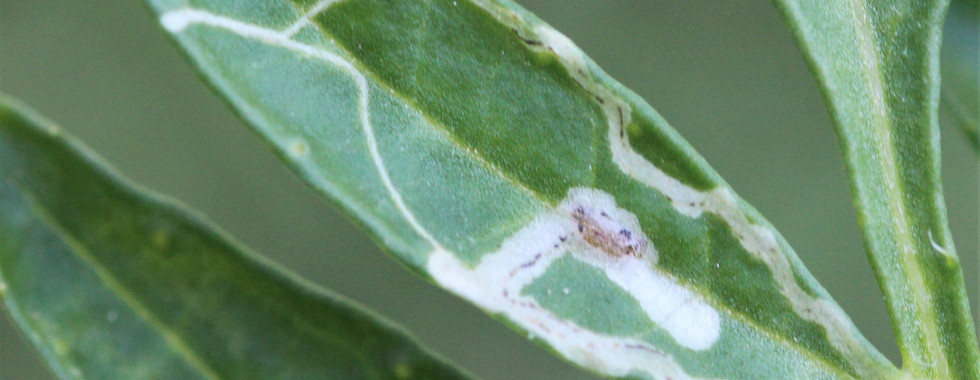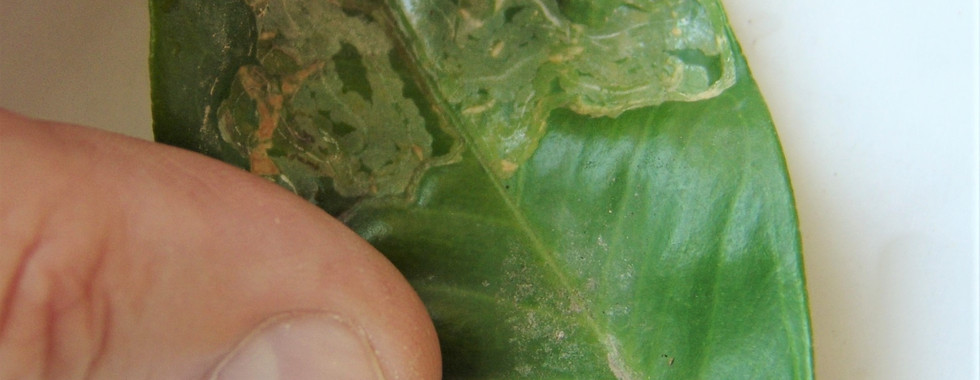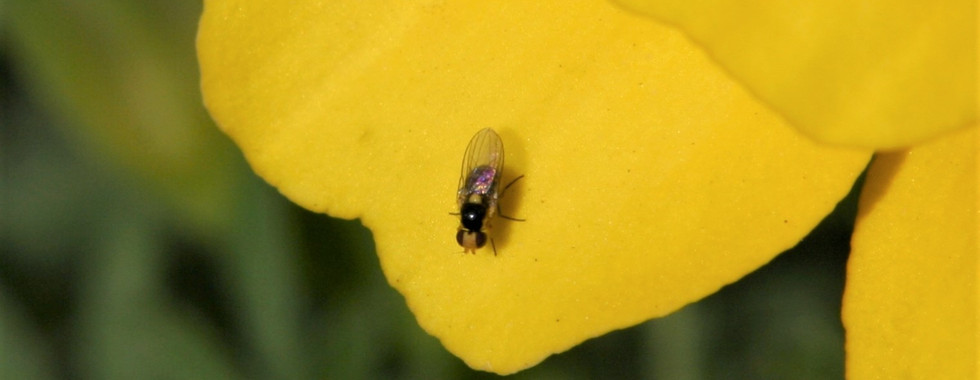Leaf Miner
- GardenMaestro
- Jan 21, 2023
- 3 min read
Updated: Feb 10, 2023
Common name: Leaf Miner
Classification: Insecta, various species
Physical description
Adult stage: Small flies are between 1.5 and 2mm long and are shiny black in color. They have one pair of wings that extend beyond the end of the abdomen (approximately six times the length of the head – adult fly).
Larval stage: Small worm-like larvae found between the upper and lower epidermis of the plant leaf; the larvae grow as it feeds and can measure between 0.3mm and 3mm in size. This is the most conspicuous stage and when damage is normally noticed.
Description of damage
The insect causes some physical damage to the plant tissue during both the larval and the adult stages of its life.
During the larval stage, the larvae actively burrow through the soft tissue (between the upper and lower surface) of the leaf. These “burrows” (or mines) are very conspicuous, and give the pest is the generic name “leaf miner”. If there are a large number of larvae in each leaf the tissue damage is tremendous (if left untreated). The leaf structure collapses, the connective tissue is destroyed and the leaf becomes weakened, as well as becoming an easy entry point for fungi. The plant experiences stress and stunting due to the attack as well as the reduction in photosynthetic tissue.
During the adult stage, the insects feed directly from the leaf surface, causing lesions and blemishes on the upper and lower surface of the leaf. This scaring also reduces the amount of photosynthesis, as well as affecting the aesthetics of the plant, although adults have to be prevalent in large numbers to affect this.
Tissue damage is aesthetic and permanent in nature, even if the larvae are killed the damage will still be visible; damaged leaves can be removed as long as not too many are removed which may impact the photosynthesis of the plant as a whole.
Life cycle description
During optimal conditions, the egg stage lasts for three days. This is then followed by the larval feeding stage, which lasts between three and five days whereas the pupal stage lasts for a further eight days. Adults emerge and mating begins after the first day. Adults live for between twelve and fourteen days. The average life cycle is between twenty-two and thirty days.
Plants affected
A very common problem on seasonal plants and vegetables: Vinca, Petunia, Marigolds, Lettuce, Cabbage, Tomato, etc. Anything with a soft leaf that is fast growing. It will also affect some perennial plants like Ixora, Citrus, etc.
General comments
Control of the adult fly is nearly impossible. Most controls are aimed at breaking the breeding cycle during the larval stage.
Control methods - Natural
Simply removing (and discarding) damaged foliage can keep the problem at a manageable level. Damaged tissue does not repair, so the blemishes will remain even if the insect is killed.
Control methods - Cultural
The effects of leaf miner can be minimized (not prevented), by using cultural methods such as "catch crops" or "Companion planting". Sticky insect cards can also be placed between high-risk crops to catch as many flying adults as possible, thereby reducing the effects of the pest.
Control methods - Organic
Insecticidal oils such as Neem are also effective in controlling and breaking the breeding cycle, but only when used in a program with an emphasis on prevention not curing an existing problem.
Control methods - Chemical
Plants can be treated with a combination of systemic and contact insecticides. Care needs to be taken as most chemical treatments will have a residual period, so should not be used on edible crops.
























Comments